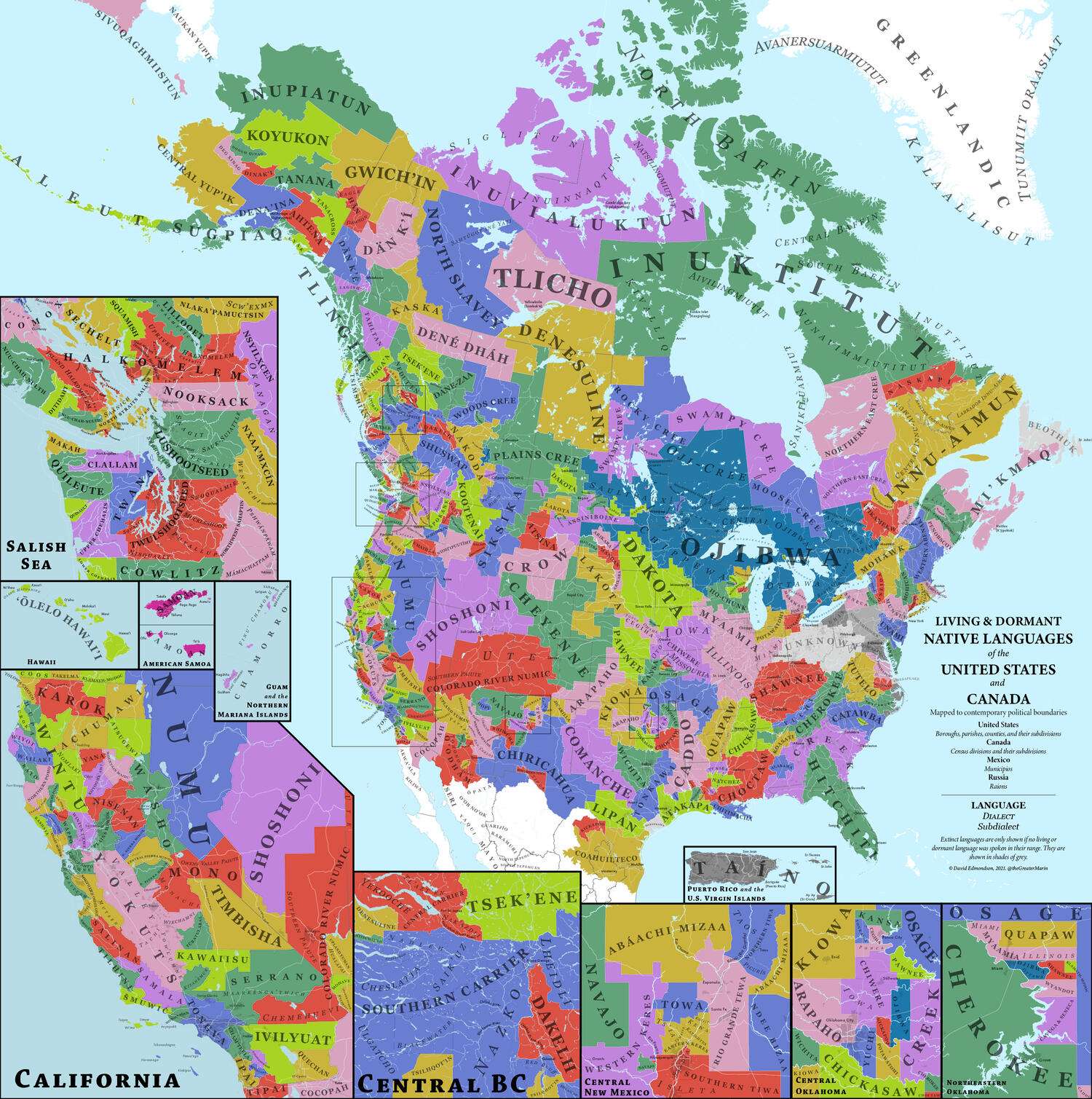Living and Dormant Indigenous Languages of North America
OctaviusIII:
Here's a link to the PDF: https://1drv.ms/b/s!Ahd1LwLBwdZGh90eg2m4XIT7L1aW5w?e=oxDWXf
So this project looks at the current and original territories of living and dormant (i.e., not currently spoken but revivable) indigenous languages in the United States and Canada. It maps them to modern political boundaries to give a better sense of Here = This Language.
The target audience is non-Indigenous peoples, so I tried to include familiar wayfinding like major roads and urban areas alongside natural features. I also used endonyms where it was legible to most English speakers. So, while I dispensed with the Spanish names of California languages (i.e., Cham'teela instead of Luiseño), I didn't use nonstandard orthographies (i.e., Musqueam instead of xʷməθkʷəy̓əm). Also, it is to help people who might want to learn a bit of the native language of the land they live on to know which language it is.
This has some shortcomings, of course. The hard borders can give a false sense of delineation. Not all dialects can fit or have easily mappable borders, especially for Downriver Halkomelem around Vancouver and for Rio Grande Tewa in New Mexico.
Also, many reservations have more than one people group or language. In that case, I tried to go with the context to decide which language should be "assigned" to that area, with the notable exception in Northeastern Oklahoma with Cayuga and Seneca.
But I also have some questions, which is why I'm submitting it here besides that I think people might find it cool: a) What inaccuracies are present? b) Is it too problematic that I'm excluding most totally extinct languages? c) What else might be problematic about this project?
Collection: languages - Tags: north-america, languages, indigenous - Source: reddit.com
